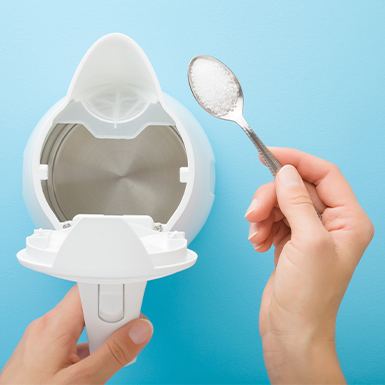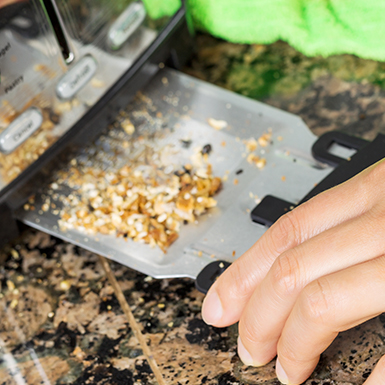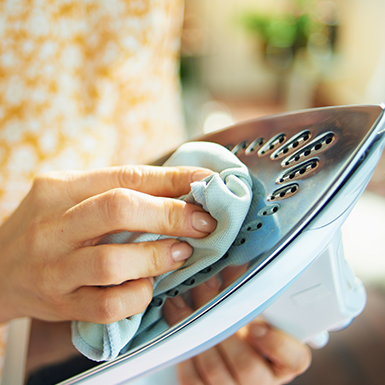The Ultimate Guide to Spring Cleaning
Safety first! In all instances, before you begin cleaning it, ensure your appliance is unplugged from the mains; moreover, that these elements do not get wet in the process.
Our manufacturers build their appliances to last; this is why so many of them offer guarantees of up to 5 years when you purchase a new appliance. However, with a dedicated effort to conduct a little maintenance on them, you can prolong the lifespan of your product even further, keeping it running efficiently, and saving you money.
In all instances, we recommend referring to the manufacturer’s guidelines before spring cleaning any of your home appliances.
How to Spring Clean your Small Appliances
Anything that is mechanical or electrical requires maintenance, so make sure you don’t neglect your small appliances in your big Spring clean! Plus, you’ll be rewarded with a more energy efficient product that lasts longer too.
How to Clean a Kettle
Whether it’s a jug or a traditional style kettle, the process is the same - every few months use white vinegar, baking soda, lemons, Coca-Cola, or a descaling kit from your local hardware store. All you need to do is choose your preferred cleaning product and get to work!
- Are you looking for a new kettle for your kitchen? Shop models from your favourite manufacturers, like Bosch, Beko and Smeg online for distribution via our network of independent Euronics Agents.
Cleaning Your Toaster
To keep this handy kitchen appliance working efficiently and free from weeks of stale toast crumbs, experts recommend that you give your product a deep clean every 3-4 weeks, however, if you have a large family who loves to toast, every 1-2 weeks is best.We’ve written this handy guide to keep your toaster in tip top condition!
- Looking for a new toaster for your kitchen? Shop models from your favourite manufacturers online for distribution via our network of independent Euronics Agents.
Cleaning Blenders, Food Processors, Juicers & Smoothie Makers
- Need a new Blender for your kitchen? We think you’ll love these great products from Ninja, they’re getting top scores from our customers.
- Food Processors? These stylish appliances are perfectly sized to sit on your kitchen countertops and make sauces and purées a breeze! Shop online for delivery via our network of local, independent store owners.
- Juicer & Smoothie Maker? Coming complete with a one year guarantee, this kitchen Ninja allows you to make nutritious juices and smoothies, with “minimal effort with maximum results”. (Verified Reevoo review: Rebekah, Belfast - 11.02.21).
Cleaning Air Fryers
Famous for its French fries, tender chicken and other crunchy snacks without the need for copious amounts of oil and better still, you don’t have to be a kitchen pro to use it! A dirty air fryer will build up grease, causing your fryer to start smoking and ruining the flavour of your recipes. So, just like any other kitchen appliance, this trusty device requires regular cleaning and maintenance to keep it working efficiently and ensure that it is free from smells and odours.Follow our handy to deep clean your air fryer:
- https://www.realhomes.com/advice/how-to-clean-a-kettle
- https://cleaning.lovetoknow.com/cleaning-tips/how-clean-toaster-inside-out
- https://www.towerhousewares.co.uk/blog/how-to-spring-clean-your-blender.html
- https://www.digitaltrends.com/home/how-to-clean-an-air-fryer/
- https://www.goodhousekeeping.com/uk/house-and-home/household-advice/a680298/how-to-clean-an-iron/






